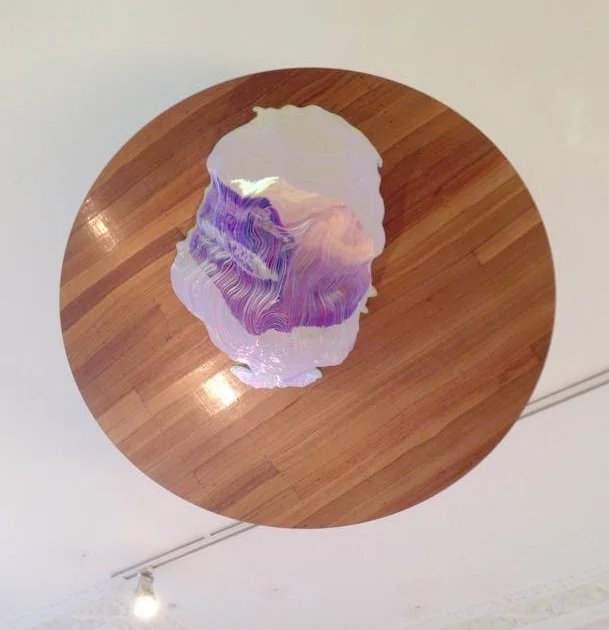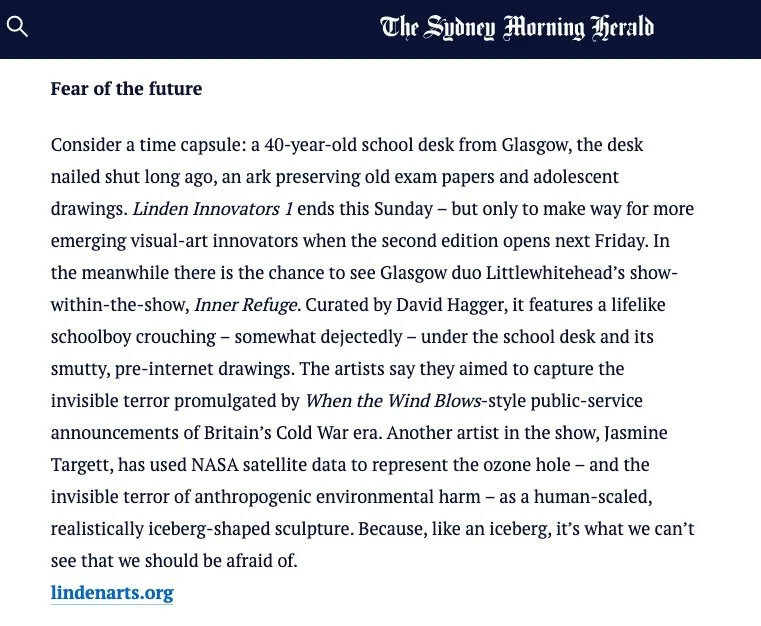
Blind Spot
2014 Innovators 1
Linden New Art
16 May - 22 June 2014
Curator - Melinda Martin
Artists - Jessie Bullivant, littlewhitehead, curated by David Hagger, Nicholas Ives, James Bonnici and Amelie Scalercio, Britt Salt, Jasmine Targett
Linden's Innovators series of exhibitions presents new and innovative contemporary art. The artists in Innovators 1 respond to the unique spaces at Linden, through painting, sculpture, installation and intervention.
Image - Jasmine Morgan Ryan, Blind Spot, 2014. Linden New Art.
Artwork Presented -
Blind Spot, 2014.
Perspex with steel mirror.
Size - Perspex L 1200 W 1700 H 2200 mm, Mirror - 1200mm diameter.
Images - (above) at Linden Centre for Contemporary Art 2014 (below) Politics of Perception with Debbie Symons at Latrobe Regional Gallery for Art + Climate = Change 2015.
‘In every observation there is a blind spot, the spot on the retina where the optical nerve is connected making the eye blind on that very spot, all one can do is try to move these blind spots, in an effort to catch a glimpse of the invisible’- Krogh Jensen
Blind Spot maps the 20th century tipping point of awareness surrounding environmental concerns – the discovery of the Ozone Hole. Like an iceberg looming in space it is a dark wonder of the natural world that cannot be found on any atlas or world map. Its appearance in our atmosphere every spring is a haunting reminder of how close we come to pushing our environment beyond the point of regeneration.
As the southern Ozone hole appears to be stabilising, the northern hole continues to grow, breaking record after record every year. This provokes a continuing dialogue on the Montreal protocol: did we get it right and is this the first instance of changing global behaviour to correct the imbalance humans have created in nature?
Finding a means to visually and conceptually fathom this in-perceivable aspect of nature, Blind Spot aims to delineate the blind spot in perception that fails to make the connection between existence and the systems within nature that support it. Beyond the visible, these systems can only be seen when aided by lenses and computers. These devices filter nature, offering a techno- romantic glimpse into existence.
“I wanted the viewer to be able to look up and see the ozone hole hovering in the ceiling of the gallery. By creating a lens-like mirror and installing it above the work, I was able to use the mirror like a satellite, to reflect what was otherwise out of view to the earth bound... The work maps the ozone hole filtered through the lens of a computer, revealing its visual similarity to an iceberg. The narrative of the work highlights the history of ongoing issues surrounding global warming and today’s climate change realities.”
Jasmine’s strength is in reinterpreting traditional craft based materials and techniques, working with new technologies to find innovative ways to respond to the issues her work addresses. Observing nature filtered through imagery from NASA’s Earth Observing Satellite Data Centre, Earth’s life support systems become visible within her arts practice.
Today there is a tenuous relationship between the fragility of our environment and its ability to regenerate. The success or failure of this lies in learning how to make the concerns of these invisible aspects of our life support system on Earth visible so that the unforeseeable consequences never eventuate. The forecast for tomorrow’s weather is reliant on our perception of today.
Blind Spot is a continuation of the body of work - Life Support Systems.


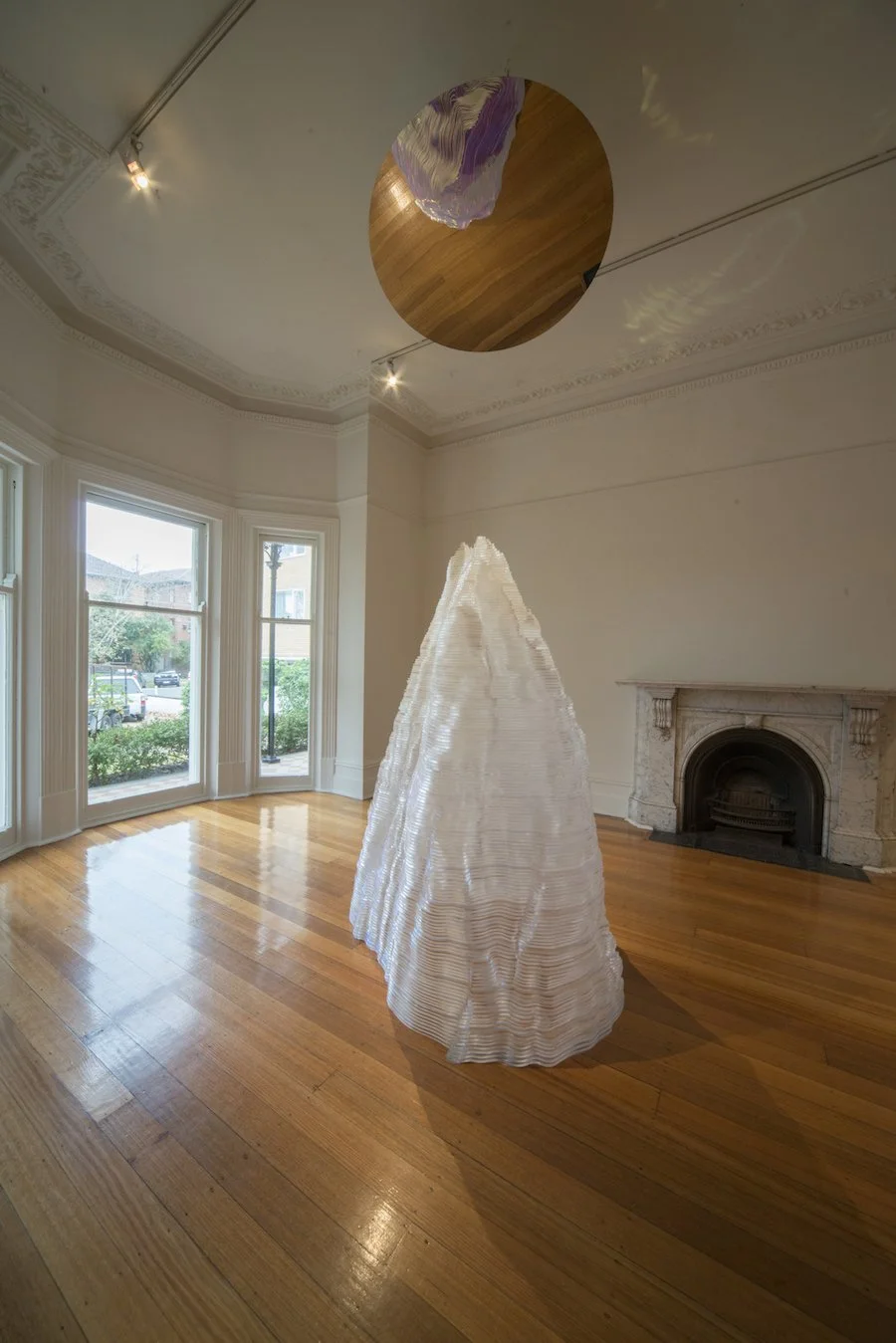

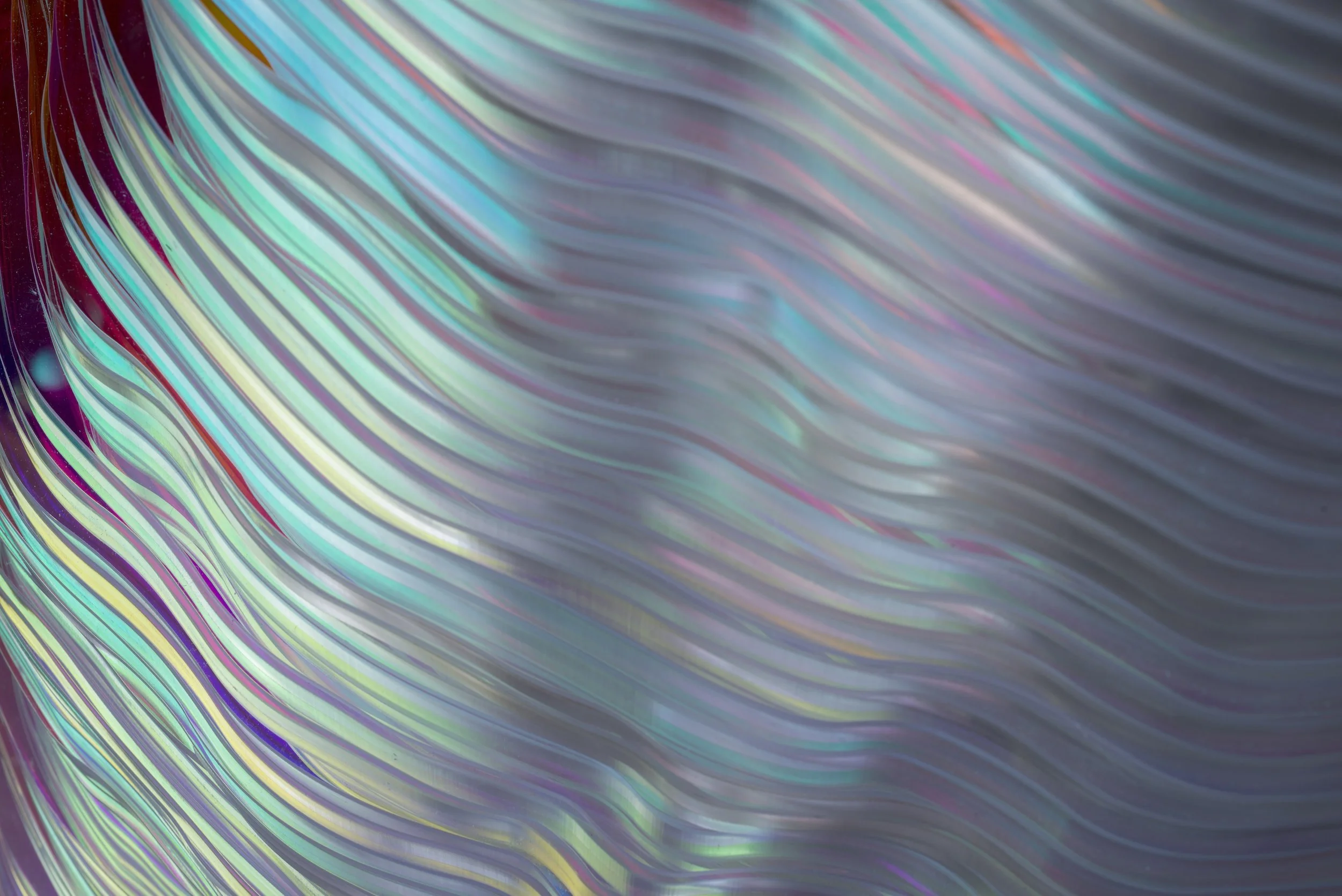
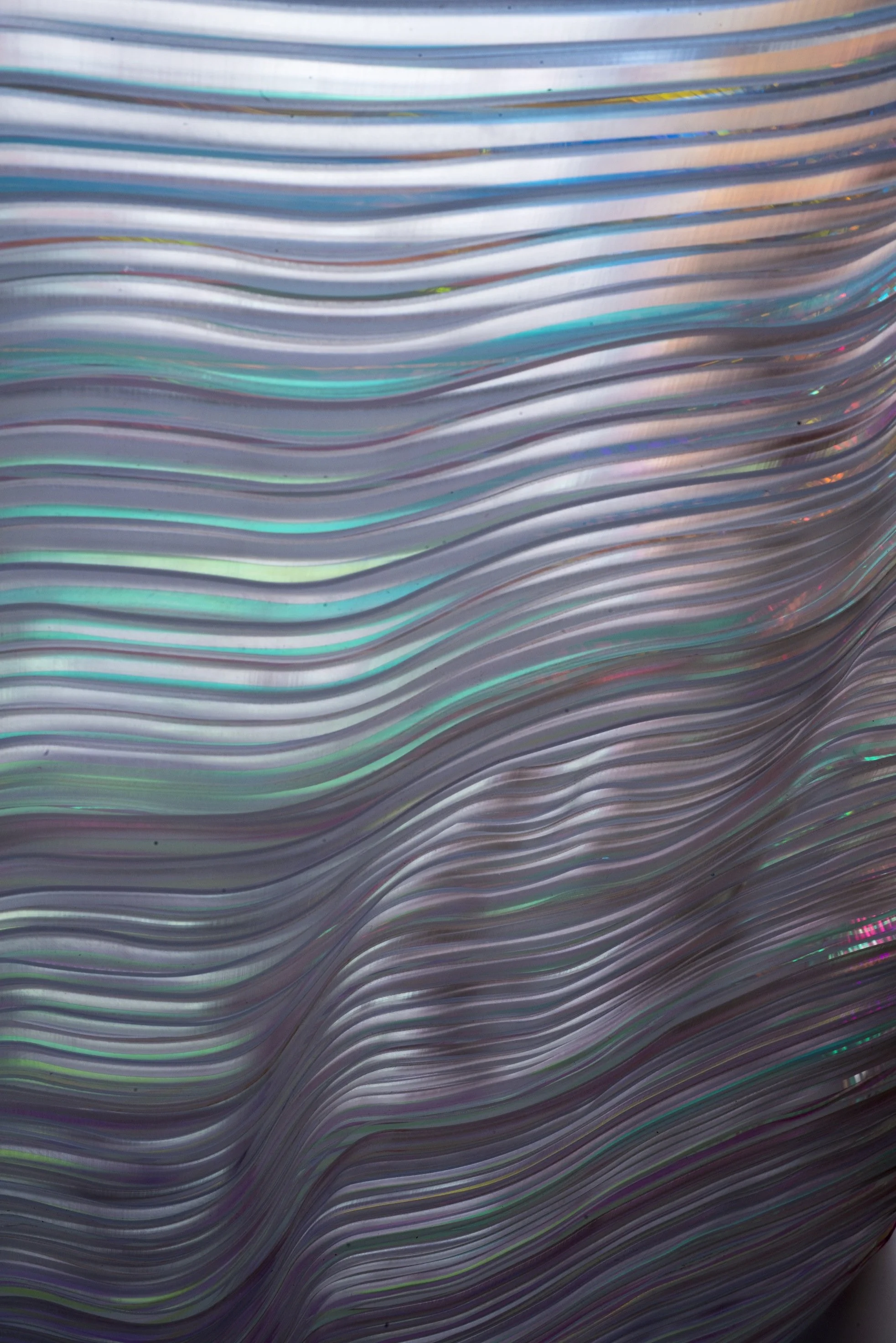


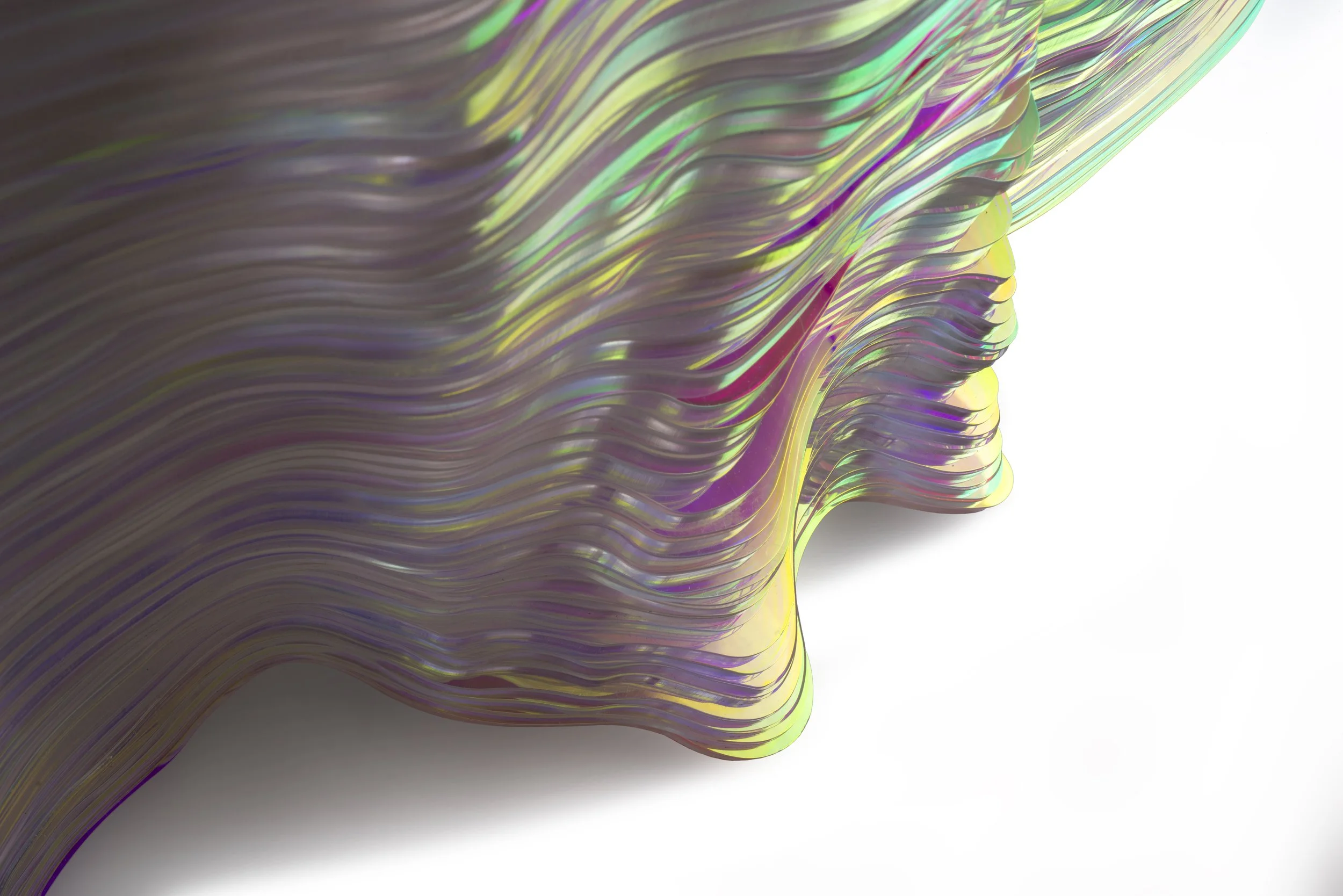
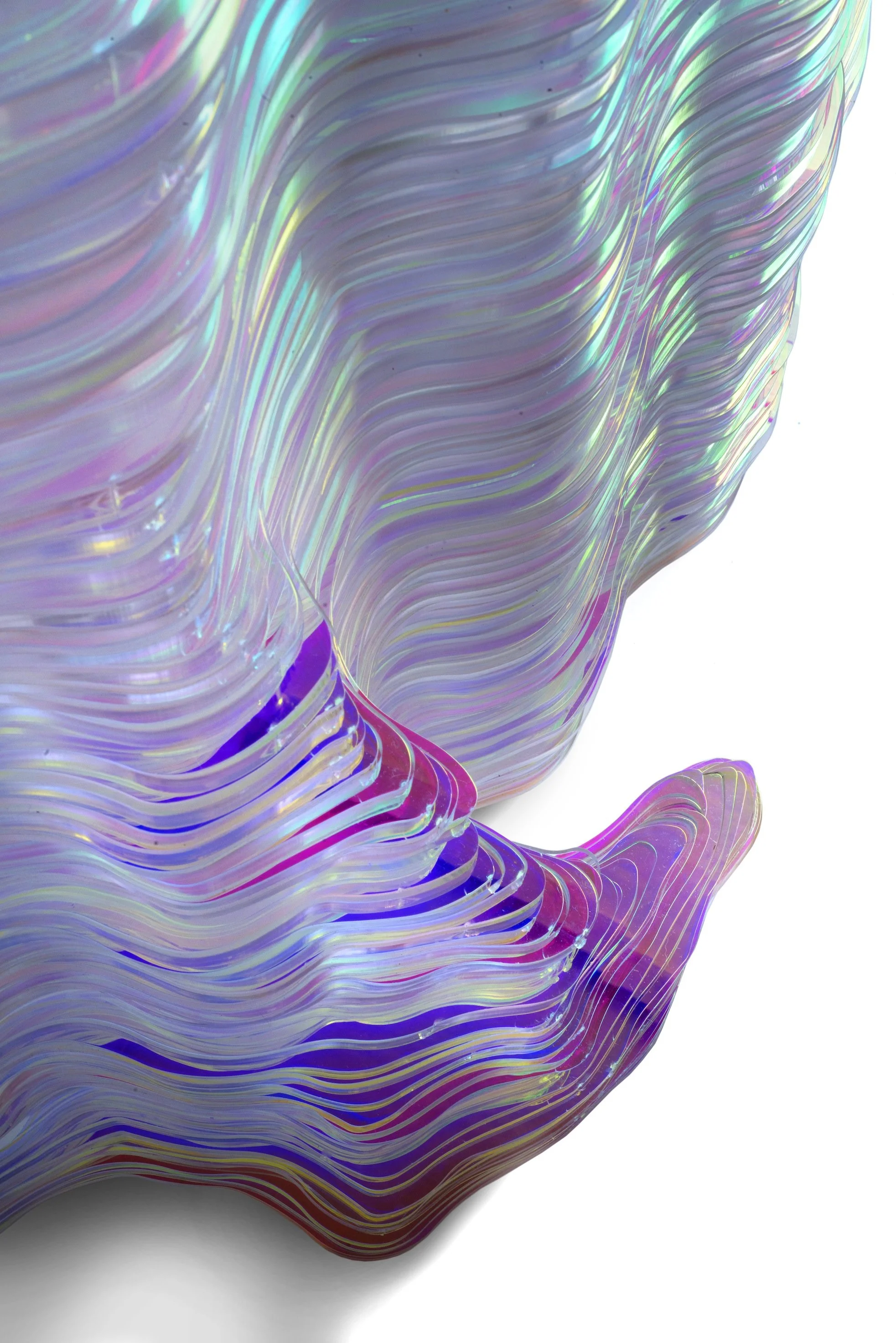
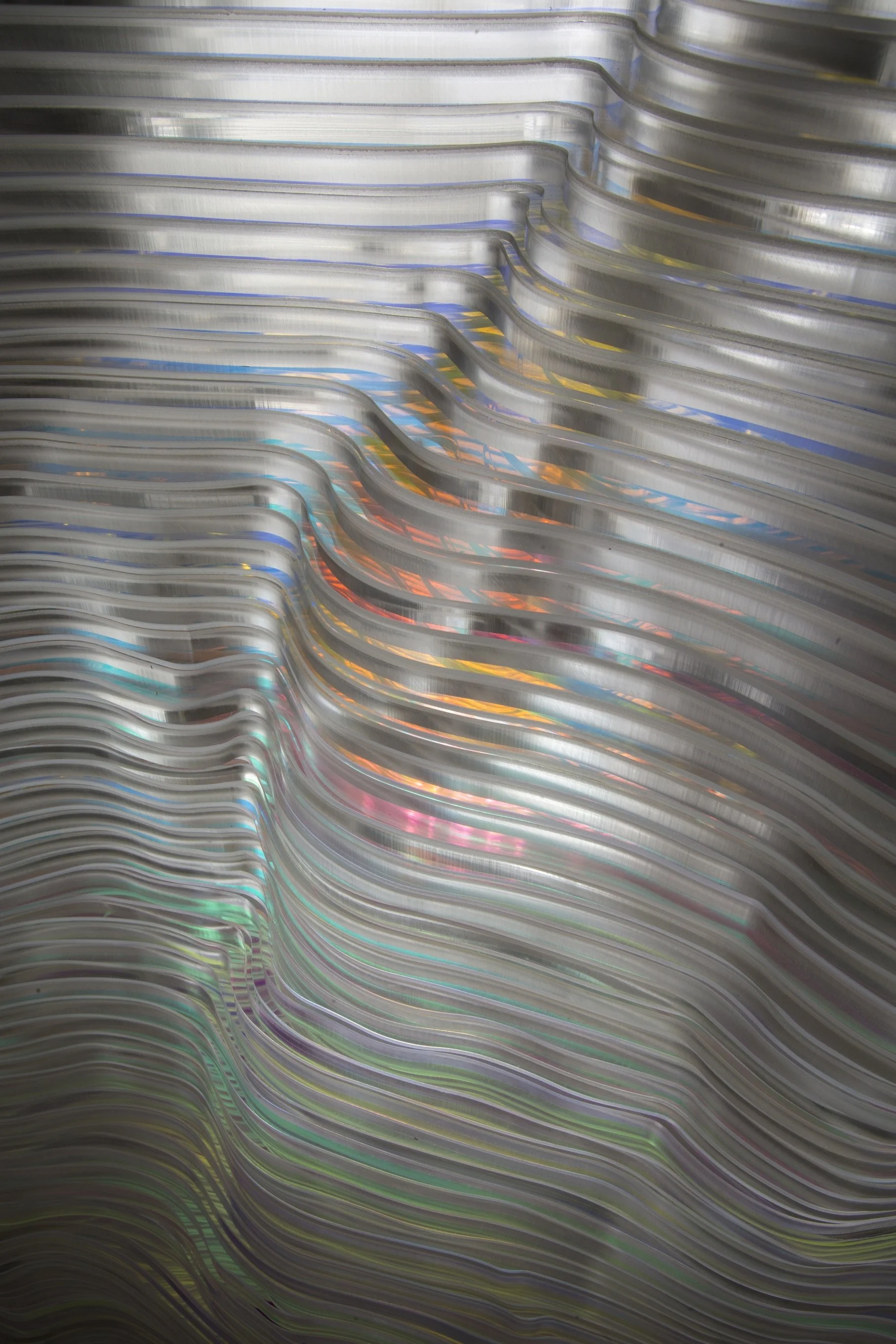




Editorial Reviews and Articles
The Age and The Sydney Morning Herald
Fear of the future
by Dylan Rainforth
Updated June 17, 2014 — 2.23pmfirst published at 12.25pm
Consider a time capsule: a 40-year-old school desk from Glasgow, the desk nailed shut long ago, an ark preserving old exam papers and adolescent drawings. Linden Innovators 1 ends this Sunday – but only to make way for more emerging visual-art innovators when the second edition opens next Friday. In the meanwhile there is the chance to see Glasgow duo Littlewhitehead’s show-within-the-show, Inner Refuge. Curated by David Hagger, it features a lifelike schoolboy crouching – somewhat dejectedly – under the school desk and its smutty, pre-internet drawings. The artists say they aimed to capture the invisible terror promulgated by When the Wind Blows-style public-service announcements of Britain’s Cold War era.
Another artist in the show, Jasmine Targett, has used NASA satellite data to represent the ozone hole – and the invisible terror of anthropogenic environmental harm – as a human-scaled, realistically iceberg-shaped sculpture. Because, like an iceberg, it’s what we can’t see that we should be afraid of.
The Age and The Sydney Morning Herald
INNOVATORS 1
by Dan Rule
June 21, 2014 — 12.13pm
The first show in this year’s Innovators series at Linden Centre for Contemporary Arts wrangles the limits of perception, believability and spatiality from several different vantages. Amelie Scalercio’s compact paintings combine the surreal with the laugh-out-loud absurd, her three-eyed cats and semi-peeled bananas smilingly disrupting the trope of the traditional head-and-shoulder portrait. UK collaborative duo littlewhitehead, meanwhile, recreate a Cold War-era primary school emergency drill, as we stumble across a small child hunched beneath a school desk (when we kneel down for closer vantage, the child has the face of a grown man). It’s creepy, unsettling and funny all at once.Britt Salt and Jasmine Targett’s sculptural installations are highlights. While Salt’s vast canopies of geometrically arranged rubber lines draw our attention to the dynamics of space and our journey through it, Targett’s mountainous sculpture – created using layers of Perspex – forms a prism of shifting, changing colour.
To read article in full - https://www.smh.com.au/entertainment/art-and-design/in-the-galleries-20140617-zsah3.html#ixzz3BDhQdjzP
